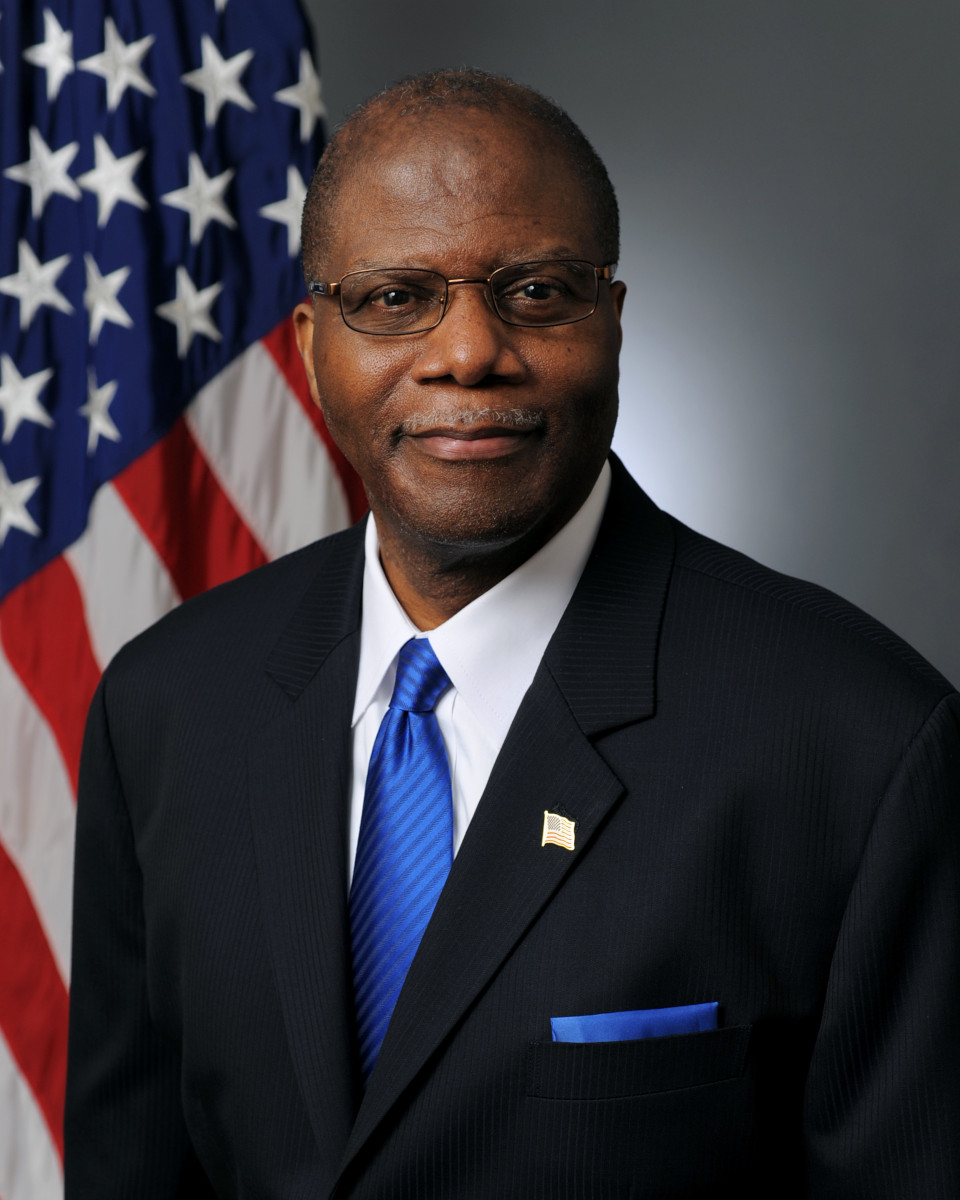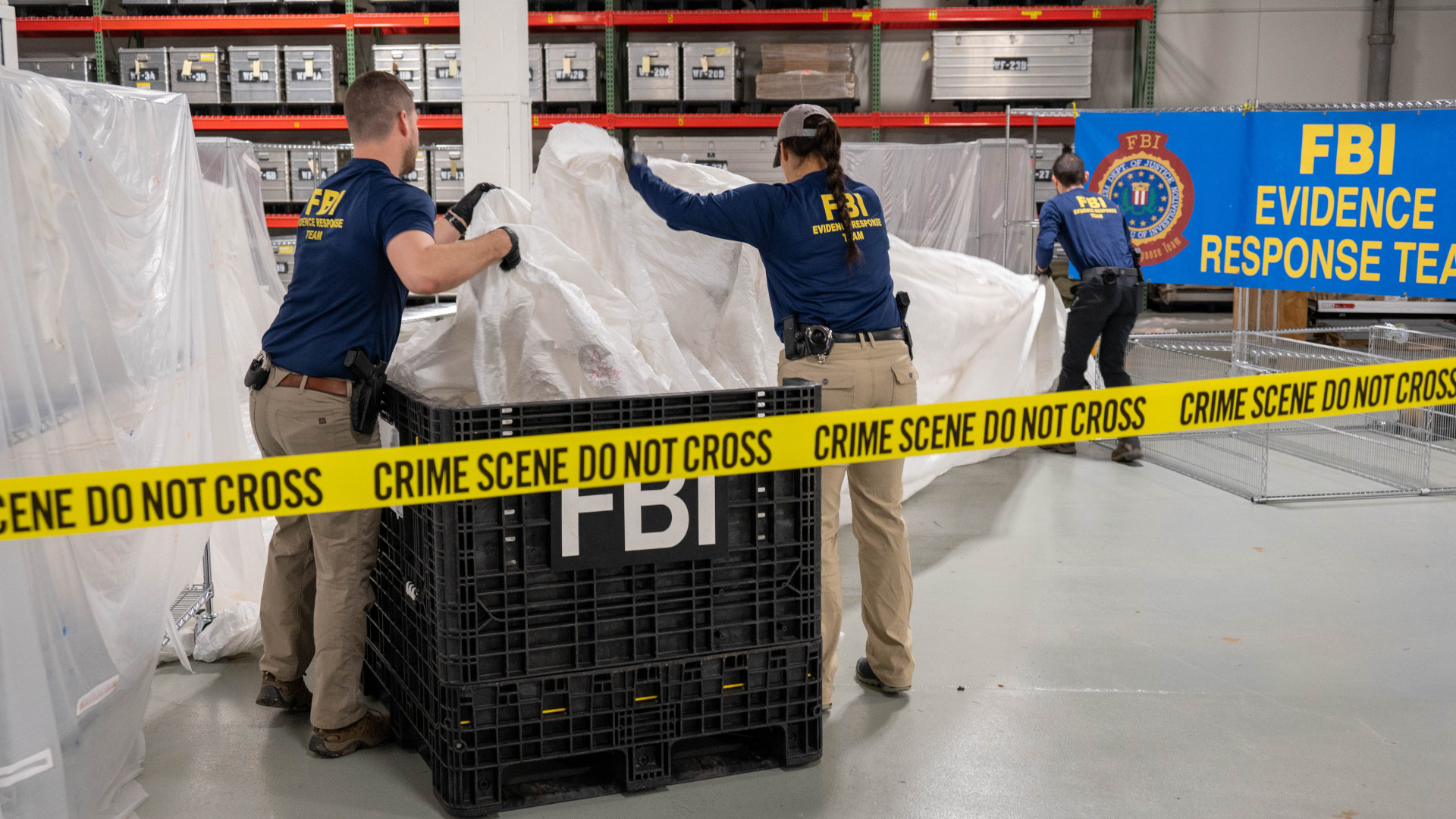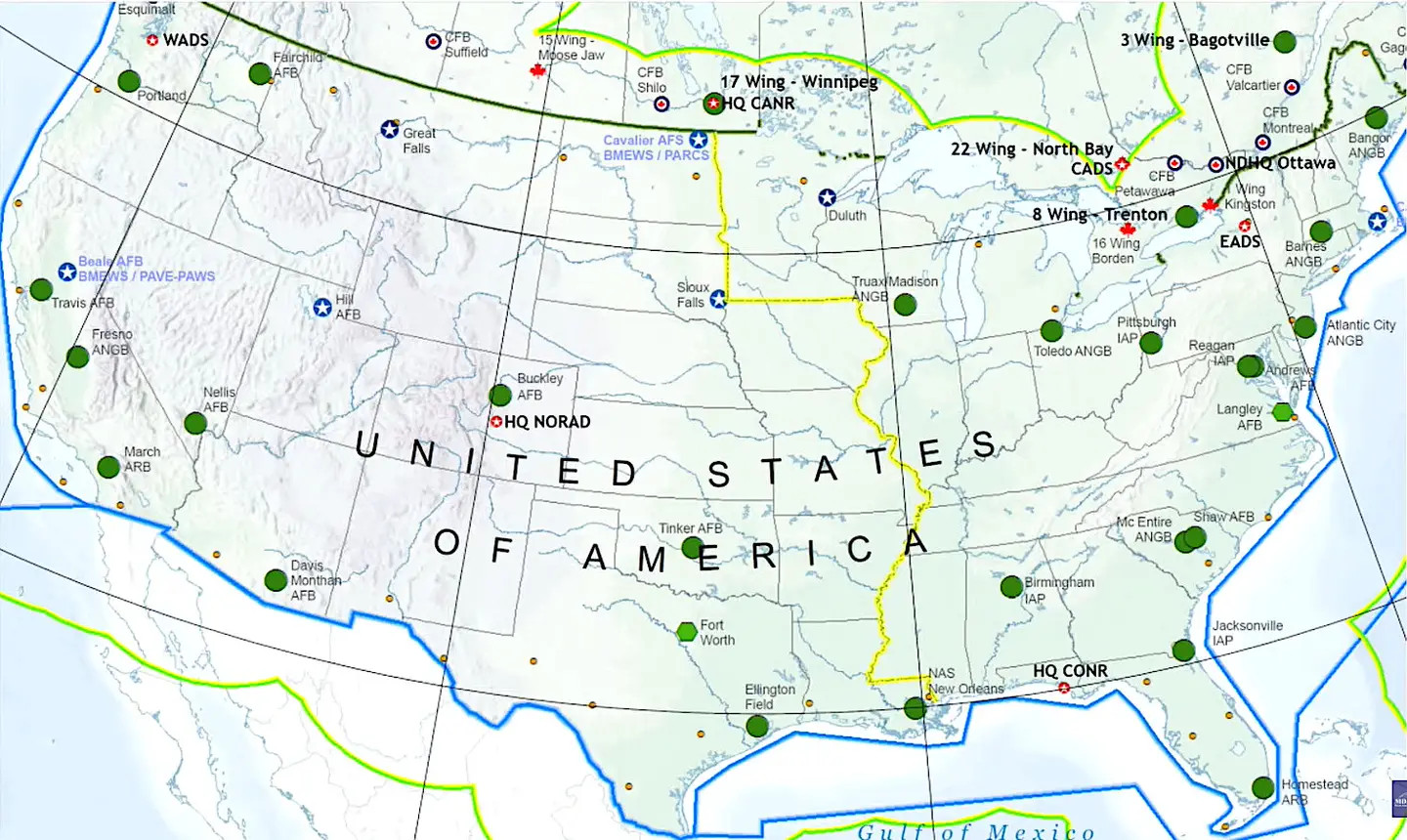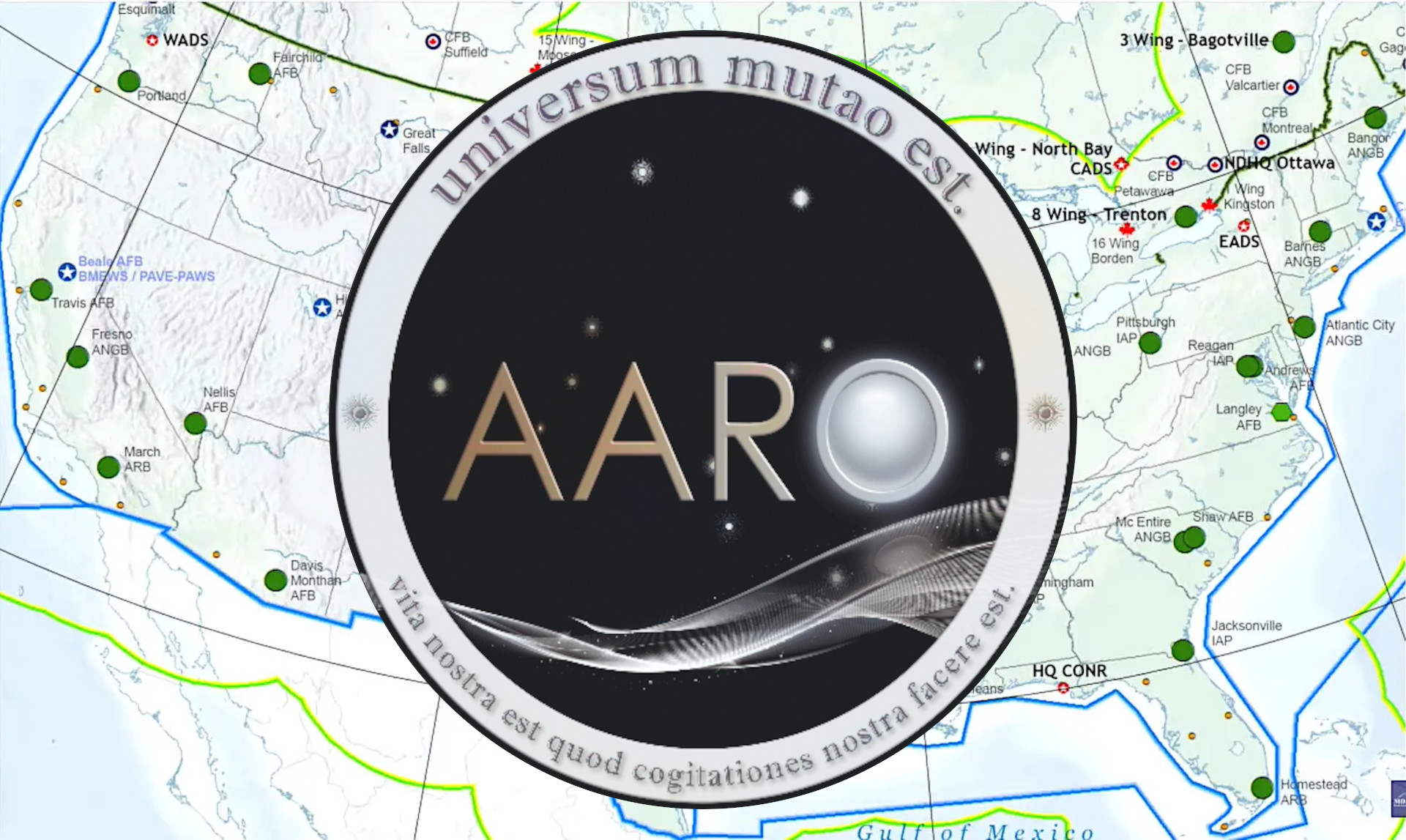The U.S. military and U.S. Intelligence Community are still trying to sort out the details about three objects that remain unidentified days after they were shot down in different areas within American and Canadian airspace. One organization has remained noticeably absent from much of the official disclosures about the responses to these incidents, the Pentagon’s fledgling All-domain Anomaly Resolution Office, or AARO. This is both conspicuous and curious since this office was created specifically to focus on issues relating to so-called unidentified aerial phenomena, or UAPs.
Readers of The War Zone can first get up to speed about the three objects that were shot down between February 10 and February 12 in our recent reporting here. These incidents followed the monitoring of what has been identified as a Chinese surveillance balloon as it transited airspace over the United States and Canada, which was then brought down over U.S. territorial waters in the Atlantic Ocean on February 4.

White House Press Secretary Karine Jean-Pierre told reporters during a routine briefing yesterday, that the U.S. Intelligence Community had yet to make any final assessments and that efforts to recover the remains of the objects were still ongoing.
The day before, John Kirby, the top spokesperson for President Joe Biden’s National Security Council (NSC), announced the creation of a new working group “to study the broader policy implications for detection, analysis, and disposition of unidentified aerial objects that pose either safety or security risks.” Part of the work that this NSC-led team, helmed by National Security Advisor Jake Sullivan, is expected to undertake will include just getting a better handle on the full extent of benign high-altitude aerial activity over the United States.
That seems all fine and well, under the circumstances, but there is just one major problem, a dedicated office just for this exact purpose was already stood up, and with significant fanfare — the AARO. We were not alone in being puzzled over this contradiction, either.
“Why is the White House creating a new ‘interagency team’ to monitor, investigate & report on unidentified aerial objects when we already have @DoD_AARO which we helped create over two years ago?” Marco Rubio, a Republican Senator from Florida, who has been an outspoken advocate for taking UAP sightings seriously from a national security perspective, wrote on Twitter in response to the news about the new NSC-led group.
After a classified briefing yesterday, Rubio added that he believed that 95 percent of what was discussed behind closed doors could be disclosed to the American people. He further said he believed that AARO was being under-utilized in response to these incidents.
AARO was established last year with the stated goal of becoming a centralized “authoritative office” within the Defense Department for all things related to UAPs. Congress included provisions intended to strengthen and expand its mandate in the annual defense policy bill, or National Defense Authorization Act (NDAA) for the 2023 Fiscal Year, as you can read more about here.
The War Zone has reached out to the Pentagon and to the Office of the Director of National Intelligence (ODNI) for more information about AARO’s involvement in these recent aerial incidents. We do know that AARO’s Director Sean Kirkpatrick was among those that briefed members of Congress on the overall situation yesterday.

Regardless, Senator Rubio’s basic question about why there was a need for President Biden to direct the establishment of a new policy-focused interagency team in response to the recent incidents if AARO already exists as just such an entity is certainly valid. This is especially true given years of assurances from various elements of the U.S. military that they have finally been taking the UAP issue more seriously.
Per public statements, AARO is focused on refining and centralizing policies and procedures for tracking, reporting, and analyzing UAP-related incidents within the Department of Defense. It is also responsible for maintaining a centralized repository of relevant data and conducting additional intelligence assessments.
The office’s full duties, as outlined in Section 1683 of the Fiscal Year 2022 NDAA, are:
(1) Developing procedures to synchronize and standardize the collection, reporting, and analysis of incidents, including adverse physiological effects, regarding unidentified aerial phenomena across the Department of Defense and the intelligence community.
(2) Developing processes and procedures to ensure that such incidents from each component of the Department and each element of the intelligence community are reported and incorporated in a centralized repository.
(3) Establishing procedures to require the timely and consistent reporting of such incidents.
(4) Evaluating links between unidentified aerial phenomena and adversarial foreign governments, other foreign governments, or nonstate actors.
(5) Evaluating the threat that such incidents present to the United States.
(6) Coordinating with other departments and agencies of the Federal Government, as appropriate, including the Federal Aviation Administration, the National Aeronautics and Space Administration, the Department of Homeland Security, the National Oceanic and Atmospheric Administration, and the Department of Energy.
(7) Coordinating with allies and partners of the United States, as appropriate, to better assess the nature and extent of unidentified aerial phenomena.
(8) Preparing reports for Congress, in both classified and unclassified form, including under subsection (i).
In January, Douglas D. Johnson, an independent UAP researcher, obtained a copy of a presentation that AARO Director Kirkpatrick had given to the National Academies of Sciences, Engineering, and Medicine’s Transportation Research Board. It states that the office’s core mission is to:
“Minimize technical and intelligence surprise, by synchronizing scientific, intelligence, and operational detection, identification, attribution, and mitigation of unidentified, anomalous objects in the vicinity of national security areas.”

That presentation also included a slide that said “the potentially ubiquitous presence of UAP defines the national-security implications and drives the broad range of stakeholders and demand for rigorous scientific understanding of and intelligence on phenomena.”

“We have an important and yet challenging mission to lead an interagency effort to document, collect, analyze, and when possible, resolve reports of unidentified anomalous phenomena,” Ronald Moultrie, Under Secretary of Defense for Intelligence & Security, further explained at a media roundtable last December.

Based on all this, AARO would certainly appear, at least in principle, to have an important role to play in the response to the recent aerial intrusions in U.S. and Canadian airspace. The office’s duties seem relevant to the response to the trio of still-unexplained objects, as well as the one that has been categorized and attributed as a Chinese government spy balloon. That balloon is reportedly part of a larger Chinese high-altitude intelligence program dating back many years.
The War Zone for years has called attention to this likely reality, laying out a particularly detailed case back in 2021 for why many UAP sightings are more likely to be balloons or drones being used by foreign powers for intelligence-gathering and other malign purposes.
AARO’s most recent annual UAP report to Congress, produced together with ODNI’s National Intelligence Manager for Aviation (NIM-A), had already provided further evidence of this. Of 366 newly cataloged UAP incidents in 2022, 163 were assessed to be “balloon or balloon-like” and 26 more were determined to be “Unmanned Aircraft Systems (UAS) or UAS-like entities,” according to an unclassified version of that report.

At the same time, there are strong indications that a slew of legal, policy, procedural, and other hurdles may be impacting AARO’s ability to contribute to the responses to these kinds of aerial incidents and could reflect broader issues. For one, Congress has already admitted that the office is currently underfunded, which occurred as a result of some kind of budgeting or accounting error.
Senator Kirsten Gillibrand, a New York Democrat, “said in an interview that the inadequate funding level was a mistake in the appropriations process that Congress uses to allocate federal funds, attributing the error to an apparent miscommunication,” according to a report yesterday from The Wall Street Journal. “Ms. Gillibrand couldn’t say exactly how much money AARO needs, calling it classified. She said she and Mr. Rubio plan to send a letter to the Defense Department, asking for money to be reappropriated to fund the office fully for this year.”
However, “they have the funding to do what needs to be done now,” Rubio told The Journal. “But we’re going to have to correct the error … so they can continue their work to the end of the year.”
“We can’t provide budgetary information on AARO as the Military Intelligence Program budget is classified,” Susan Gough, a spokesperson for the Office of the Secretary of Defense, told The War Zone in December 2022 in response to more general questions about the office. “Similarly, for operations security reasons, we don’t comment on AARO’s staff or organization.”
“AARO is a small office, but it is growing quickly to meet its mission. AARO’s team is a mix of military and civilian employees, as well as contractors,” Gough added. “The team combines a wide range of expertise in data collection, research and analysis, operations, and technical skills.”
AARO’s place within the Department of Defense and as a component of its overarching Military Intelligence Program may well be the bigger issue at play in relation to the recent incidents. The U.S. military is legally prohibited from conducting intelligence-gathering operations domestically outside of acting in supporting roles to civilian agencies. This is something The War Zone has touched on in the past in relation to U.S. border security matters.
“So as far as the recovering, the [Chinese spy balloon and the other objects] — technically the FBI has the lead under counterintelligence authorities,” U.S. Air Force Glen VanHerck, head of U.S. Northern Command (NORTHCOM) and the U.S.-Canadian North American Aerospace Defense Command (NORAD), explained during a press conference on February 12. “They are embedded with DOD because we have the resources to enable them to conduct the operations.”

“I would point out and I think it’s important to talk about is, day to day we do not have the authority to collect intelligence within the United States of America,” VanHerck had also noted at a press conference on February 6. “In this case, specific authorities were granted to collect intelligence against the balloon specifically and we utilized specific capabilities to do that.”
This reality may also help explain, at least in part, the apparent secondary role that the National Air and Space Intelligence Center (NASIC) looks to be playing in the response to these incidents. Though a part of the U.S. Air Force, NASIC serves as the main “source for foreign air and space threat analysis” for the entire Department of Defense.
Altogether, the recent aerial incidents over the United States and Canada have certainly raised questions about AARO’s overall role and exactly how it functions in the context of broader UAP-related intelligence efforts. By all indications, it is exposing a need to further define its duties and its relationship to other stakeholders across the U.S. government, as well as the various legal authorities, policies, and procedures that govern its work.
Concerns about the timely sharing of intelligence between members of the USIC, or lack thereof, are hardly new. Recent events have prompted separate questions about whether some kind of intelligence failure has occurred with regard to the Chinese balloon surveillance program.
After the Chinese spy balloon was shot down, Gen. VanHerck very candidly admitted that there had been “a domain awareness gap” with regard to those activities for many years. U.S. military officials had since disclosed that there is now increased security of North American airspace following the shootdown of the Chinese surveillance balloon, including tweaks to data-collection parameters on various air defense radars.

The wealth of additional information this has generated is presenting challenges for the U.S. military and others, who are now scrambling to assess the data. “We don’t fully appreciate and understand what we’re seeing,” U.S. Air Force Chief of Staff Gen. Charles Q. Brown told a gathering at The Brookings Institution think tank on Monday.
In many ways, this would seem to help explain President Biden’s decision to establish a new top-level working group at the NSC to try to get a better sense of the various policy implications that are becoming painfully apparent. As the identification and attribution of the Chinese spy balloon make clear, at least some of these intrusions are not benign.
While the current circumstances might call into question AARO’s specific value, at least in its current guise, it does underscore a need for organizations like this and for better coordination between them. AARO, with its unique knowledge base and repository of existing data, would seem well suited to be further empowered to lead this charge. Its core duties already include mandates to try to determine whether UAP incidents are actually part of larger trends that could lead back to adversarial actors. Just working to compare the objects detected and engaged in recent days with the many cases they already have information on could be key.
Whatever AARO or any other U.S. government offices haven’t or haven’t been doing, there is an entirely separate set of questions building around the Biden administration’s overall responses to these incidents and matters of transparency and disclosure.
For instance, American officials had enough information about the broader Chinese spy balloon program to give at least some members of Congress classified briefings on the matter. However, no apparent changes were made to the country’s air defense posture, including the radar settings, until last week. The official reasoning, which seems questionable, is that the prior Chinese spy balloon overflights of U.S. territory somehow didn’t warrant any action, at least with regard to North American airspace.
“The briefings to Congress last year were done, I believe, through intelligence channels. And again, you know, that was intelligence that was better understood much retro respectively based on elements of the equation that they were discovered after the fact,” Melissa Dalton, assistant secretary of defense for Homeland Defense and Hemispheric Affairs, told reporters during a press briefing on February 12. “Then the high-altitude balloon from the PRC that was shot down last weekend was categorically different than the prior high-altitude balloons because it transited the entire Continental United States… …and on that basis, we determined that we needed to enhance our radar.”
Furthermore, there are clear indications that the Biden administration was hoping to avoid having to address the spy balloon incursion earlier this month publicly, only holding its first press conference on the matter following sightings of it over Montana. This was days after it was first detected in U.S. airspace.
Furthermore, U.S. officials reportedly believed that the balloon was originally aimed at Guam and/or Hawaii, but was blown off course. The New York Times reported today that, after the situation erupted publicly, Chinese officials privately attempted to placate their American counterparts about the spy balloon by promising to “speed it out of American airspace.”
Needless to say, the Biden administration’s overrall public messaging about the Chinese spy balloon and the three unidentified objects that were subsequently shot down has been, at the very best, inconsistent in tone and candor.
“Many people, intentionally or otherwise, have been given the impression that a couple of weeks ago, our skies were clear. And then, all of a sudden, we have spy balloons and other unidentified flying objects raining down on us like confetti,” Senator John Kennedy, a Louisiana Republican, told reporters yesterday after receiving a classified briefing on the situation. “That is not accurate.”
“These objects have been flying over us for years, many years. We’ve known about those objects for many years,” he continued. “We’re not sure that we’ve known about all of them, but we’ve known about many of them. Except for the Chinese spy balloon, we don’t know what they are.”
All told, well beyond AARO, it seems very likely that more changes to how intelligence is collected and shared about UAPs, and how they are treated after entering U.S. territorial airspace, will need to come now.
Howard Altman contributed to this report.
Contact the author: joe@thedrive.com
